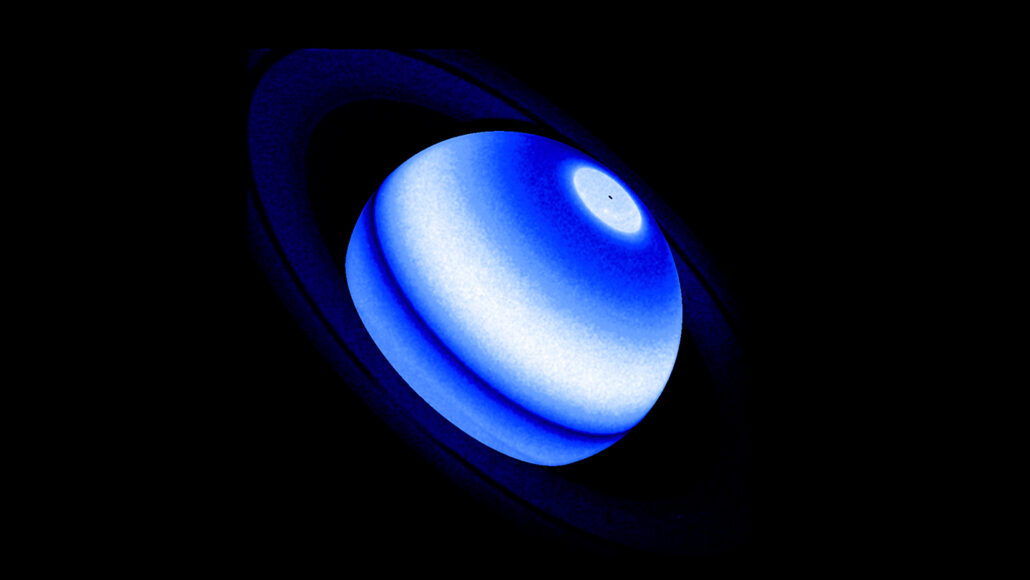Saturn’s icy rings are probably heating its atmosphere, giving it an ultraviolet glow
Water ice falling into the planet’s upper atmosphere may create an excess UV emission

Glowing hydrogen atoms form the white band in Saturn’s northern hemisphere, seen here in this composite, ultraviolet Hubble Space Telescope image. Researchers propose the hydrogen comes from icy particles that were once in the planet’s rings.
Lotfi Ben-Jaffel/IAP & LPL, ESA, NASA